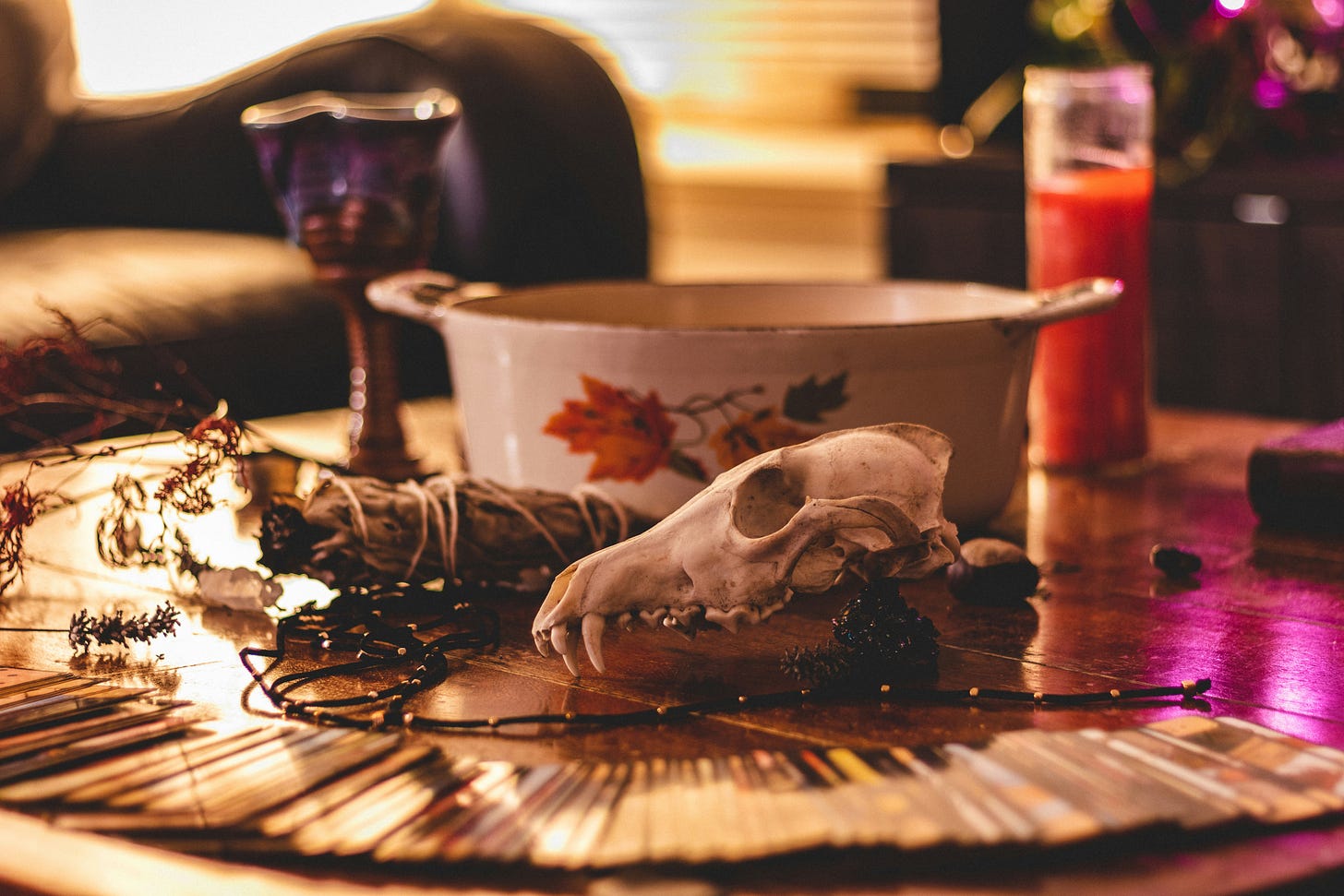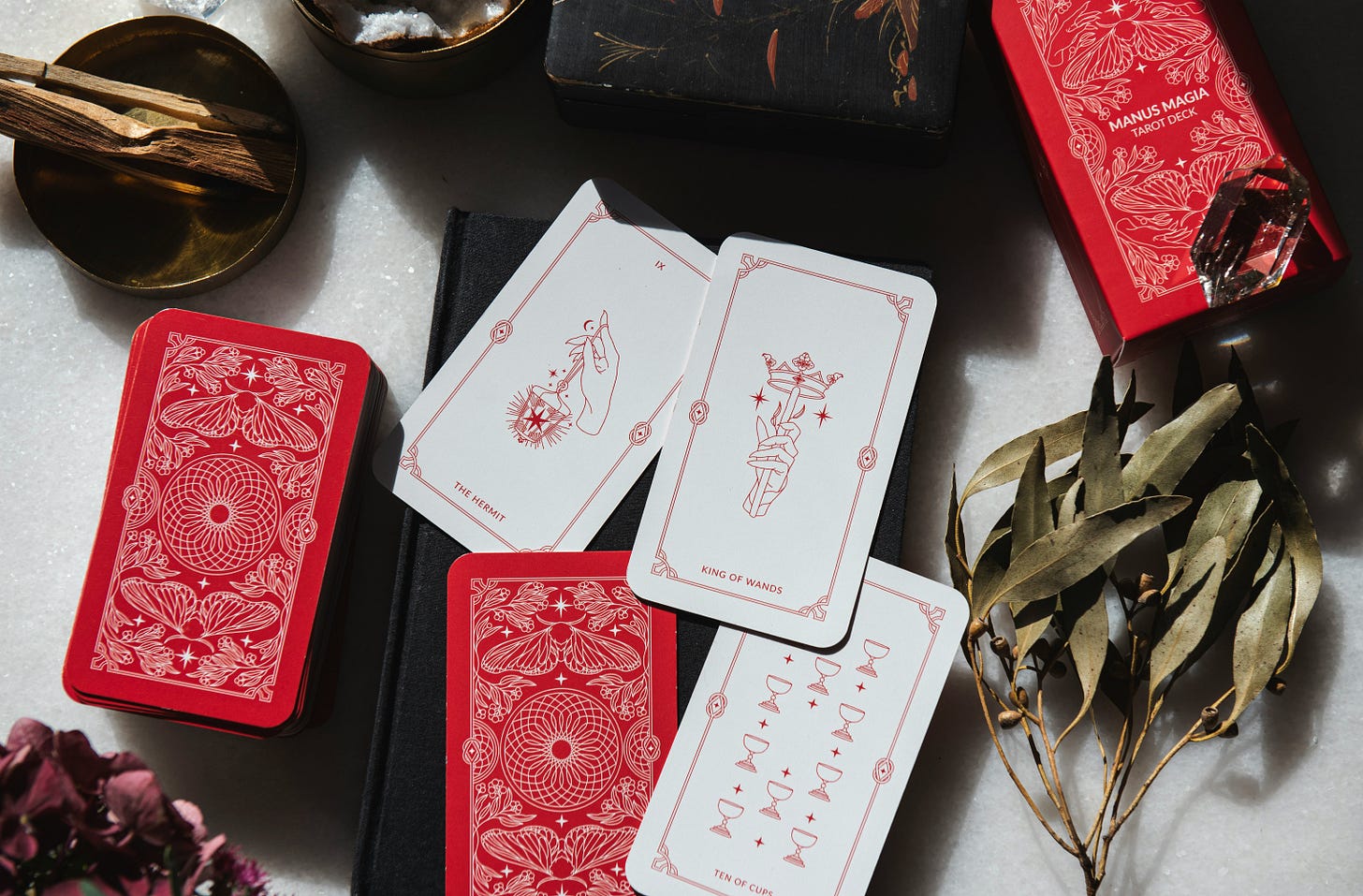From Crystal Balls to TikTok: How Divination Became ‘Cool’ Again.
Ancient practices meet modern media — how divination went from weird to viral in the age of TikTok and popular media.
Defined by Michelle Pfeffer, an Oxford University historian, ‘divination is techniques that people have developed to try and get answers to difficult questions.’ The most popular/well known, arguably, is the Ouija board, used frequently now by YouTubers such as Sam and Colby to try and contact spirits or demons in haunted places around the world.
However, that is not to say that there isn’t some scepticism surrounding not only Ouija boards, but all forms of divination most commonly religious condemnation. In Christianity, especially in the West, divination was often seen as heretical or linked to ‘demonic forces’ with the bible spreading many warnings about sorcery, soothsaying and spirit conjuring, for example, Deuteronomy 18:10–12.
Although, when looking into social media and the current popular culture, tarot cards seem to be circling like wildfire, especially across TikTok. Social media seems to be playing an almost rehabilitative role of divination, spreading it as not only a form of entertainment such as the ‘pick a card’ videos, but also arguably, that there may be some sense in it.
‘More people today than in any point in history are using some form of divination’ - Michelle Pfeffer
Historically, divination was deeply rooted in ancient civilisations, with practices like astrology and the use of natural phenomena to interpret the will of gods or predict the future. Each form of divination, not surprisingly, comes from a different culture and background of people, for example dream reading set its roots in ancient Egypt, whereas oracles and ‘seers’ were first seen in ancient Greece.
Divination is often seen to be associated with witchcraft, although contrary to popular belief it isn’t inherently apart of it. The association came to be as it was often those who defined themselves as witches or practitioners of magic that would also practice many forms of divination. Although, lets not forget that there were major parts in history when the use of divination was completely suppressed, due to the vague association with witchcraft, during the 15th-17th centuries when witch hunts were very prominent, divination practice was used as a defining factor of whether someone was a witch or not. Even using charms or consulting ‘wise women’ could’ve led to torture or execution.
When it came to the 1900’s however, the view of divination changed to one of entertainment. Ouija boards in particular turned into parlour games that were played after dinner with a group of friends, rather than being viewed as something that could contact spirits. So divination tended to become dismissed slightly, and it wasn’t just Ouija boards, you had carnival psychics and newspaper horoscopes, that people would take part in or read as a form of entertainment without any real purpose.
Lets also not forget the exploitation of divination in the early 20th century for comedic relief in TV shows. For example, Professor Trelawney in Harry Potter, who teaches divination but is portrayed as flaky, unreliable and a bit crazy at times, so she is an example of being more comic than credible. You could even say that divination was mocked and/or trivialised through mainstream media, such as films and tv shows. But how did this change?
You could relate it entirely to trends and how the media spreads a specific idea. For example, witchtok, a subculture that first appeared in 2019 on TikTok. It now has over 8.2 million posts accredited to it. It became increasingly popular throughout the pandemic with people searching answers in a time of uncertainty. However, it allowed a different view of divination to be spread rapidly across social media, with people embracing the ‘aesthetic witch vibe’ and joining/creating live videos of astrology or tarot card readings. Suddenly, divination became a little bit more believed in.
Now of course it was all still for entertainment for some people, however, it led to people turning more towards their spirituality and searching for a relief of having to make decisions on their own. Divination tools also became increasingly more attractive, tarot cards are the best example of this, people would invest in a set of tarot cards they deemed to be ‘aesthetically pleasing’ (and there are loads of designs to choose from) because it followed the trend on social media.
This led to the normalisation of spirituality and divination particularly in Gen-Z and millennials, due to the algorithm successfully mixing entertainment with introspection, across many different types of people. Will Allan, a new practicer of divination said
‘TikTok, in particular, has popularised divination in a good way, as before it was quite niche and not as widespread to those who could’ve really benefitted from it’
TikTok isn’t the only thing that has made a difference. Where popular media, such as TV shows used to mimic the use of divination, we are now seeing popular releases embracing the idea, such as ‘The Chilling Adventures of Sabrina’ and ‘American Horror Story: Coven’. But it is also popular culture in general, we are starting to see celebrities such as Lizzo talking about her use and love for astrology and even brands like Urban Outfitters incorporating ‘mystical’ aesthetics into their clothing.
In the current popular culture landscape, the opinions of divination have shifted from prediction to empowerment, which is widely seen as a positive change. The digital world can be chaotic and this new love and acceptance of divination and spirituality offers, connection control and community.
Divination isn’t just surviving in the 21st century - it is thriving, one viral reading at a time.




